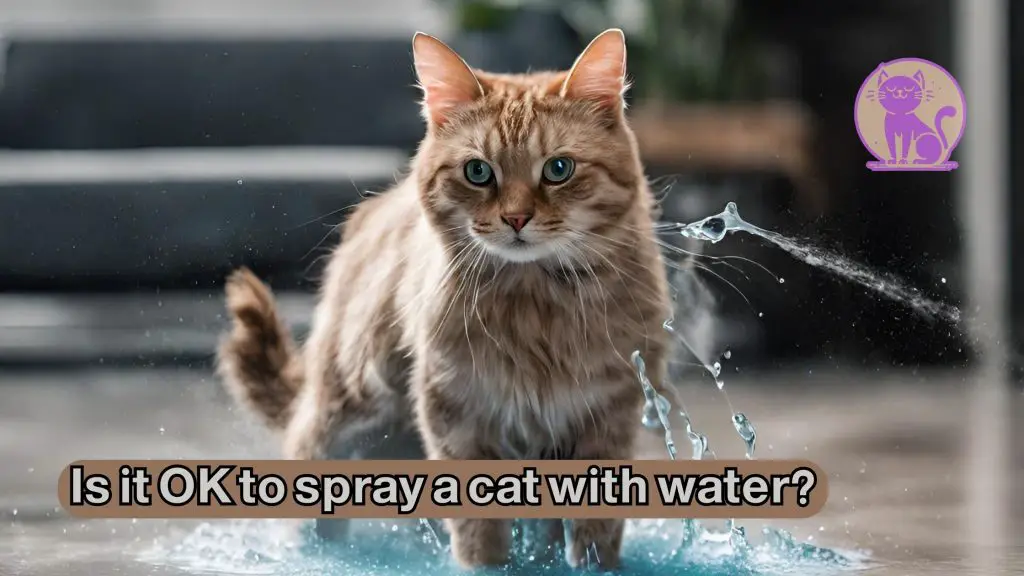When it comes to correcting unwanted feline antics, the method of cat behavior training with water spray frequently surfaces among pet owners. It’s a topic that generates a multitude of opinions and questions, particularly the pressing query, “Is it OK to spray a cat with water?” In this article, we will delve deep into the heart of this debate, evaluating whether a cat discipline spray represents a safe and humane approach to guiding your cat toward better habits. Through exploring various perspectives and insights, we will illuminate the complexities surrounding this controversial training tool and its effects on our beloved feline friends.
Understanding Cat Behavior and Discipline
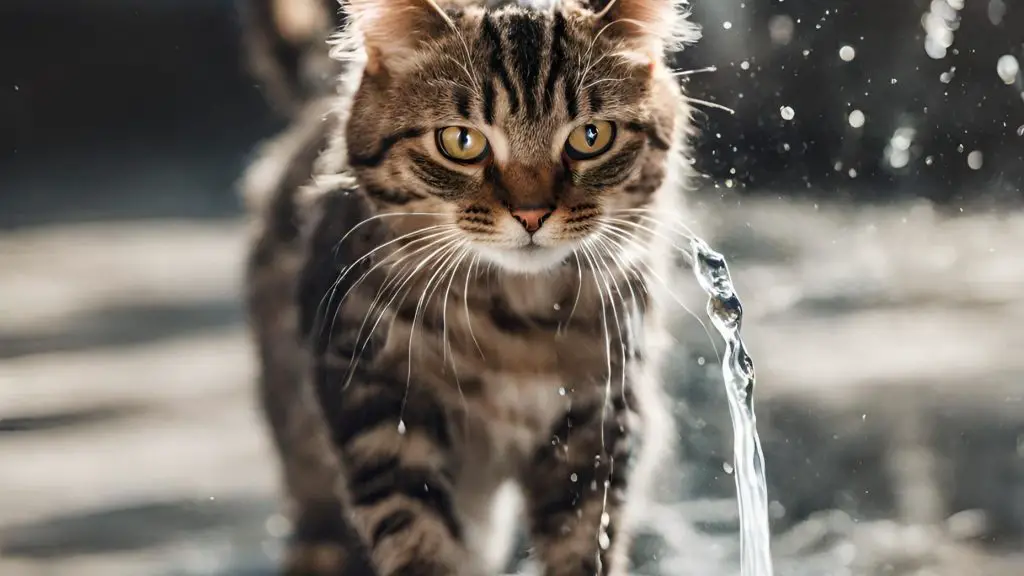
When it comes to feline discipline, understanding the root cause of how to stop cat behaviors can be more effective than merely reacting to undesirable actions. Cats possess innate behaviors that, while natural to them, can sometimes clash with our expectations as pet owners. To address these issues without causing the animal distress, it is crucial to align disciplinary methods with a cat’s instinct and environment. This involves a compassionate approach that respects a cat’s natural inclinations.
Disciplining a cat by stopping bad cat behavior with water might provide an immediate stop to actions like scratching furniture or jumping on countertops. However, experts suggest that this method may not lead to a proper or long-term understanding for the cat of why the behavior is unwanted. Instead, consistency in environment and routine, paired with positive reinforcement, plays a critical role in effectively shaping a cat’s behavior.
- Identify the behavior: Understand what behavior you want to change and why it’s occurring.
- Rule out medical issues: Ensure the behavior isn’t linked to health problems.
- Focus on positive reinforcement: Reward good behavior to encourage repetition.
- Provide alternatives: Offer acceptable outlets for your cat’s instincts.
- Be patient and consistent: Implement a routine that your cat can learn and trust.
| Behavior | Reason | Discipline Practice | Notes |
|---|---|---|---|
| Scratching furniture | Marking territory, nail maintenance | Provide scratching posts/pads | Place near the undesired scratching area |
| Jumping on counters | Curiosity, seeking high vantage points | Encourage use of cat trees or designated shelves | Make counters less appealing with double-sided tape or aluminum foil |
| Biting or aggression | Play, fear, or overstimulation | Use toys for play; avoid using hands or feet | Learn to recognize signs of distress or overstimulation |
Each cat’s personality and past experiences can greatly influence their reaction to discipline. It’s not just about stopping bad cat behavior with water; it’s about fostering an environment where good behavior can thrive through understanding and mutual trust. Creating a bond based on respect and positive reinforcement will yield the best results in behavior training.
Pros and Cons of Using Water Spray on Cats

The debate around the use of deterrent spray for cats for behavior modification elicits diverse opinions. On the one hand, water spray training for cats is hailed for its immediate response in deterring unwanted behavior. On the other, its overuse or misuse can lead to negative psychological effects on pets, leading to a stressed and untrusting cat. When considering this method among the spectrum of behavior modification tools, it is crucial to weigh its relative merits and shortcomings.
The Argument for Water Spray as a Deterrent
Advocates for water spray training for cats suggest it can effectively dissuade cats from engaging in unwanted activities such as scratching furniture or jumping on countertops. The premise is simple: a quick spritz of water can act as an immediate deterrent without causing physical harm. If used judiciously and consistently, it can be a part of a multi-faceted behavior modification strategy.
Potential Negative Effects on Your Cat’s Well-being
However, there are risks associated with deterrent spray for cats. Overreliance or inappropriate use can lead to stress, anxiety, and a subsequent breakdown in trust between the pet and owner. In severe cases, these negative associations can exacerbate the very behaviors you aim to stop, contributing to a cycle of misunderstanding and frustration.
Comparing Water Spray to Other Training Methods
- Effectiveness: Water spray can be effective for immediate deterrence, but may not be as effective for long-term behavior modification when compared to positive reinforcement methods.
- Emotional Impact: Unlike other training methods that seek to build a positive relationship between behavior and reward, water spraying can create a negative, fearful response in some cats.
- Consistency: To be effective, deterrent spray must be applied consistently – a condition that is difficult to maintain compared to automatic devices or structured training routines.
| Method | Pros | Cons |
|---|---|---|
| Water Spray | Immediate deterrent, easy to use | Potential stress inducer, inconsistent results |
| Clicker Training | Builds positive association, encourages good behavior | Requires time and patience, gradual results |
| Environmental Enrichment | Addresses root causes of behavior, promotes well-being | May require changes to home, more effort initially |
The use of water spray training for cats continues to stir debate among owners and experts alike. As we delve deeper into the nuances of cat behavior, it becomes apparent that the ideal approach to behavior modification is multifaceted, with a strong emphasis on understanding and patience. Moving forward, comparing water spray with other methods offers a broader view of possible solutions, allowing for more informed decisions in the nurturing of our feline companions.
Alternatives to Spraying Cat with Water for Behavior Training
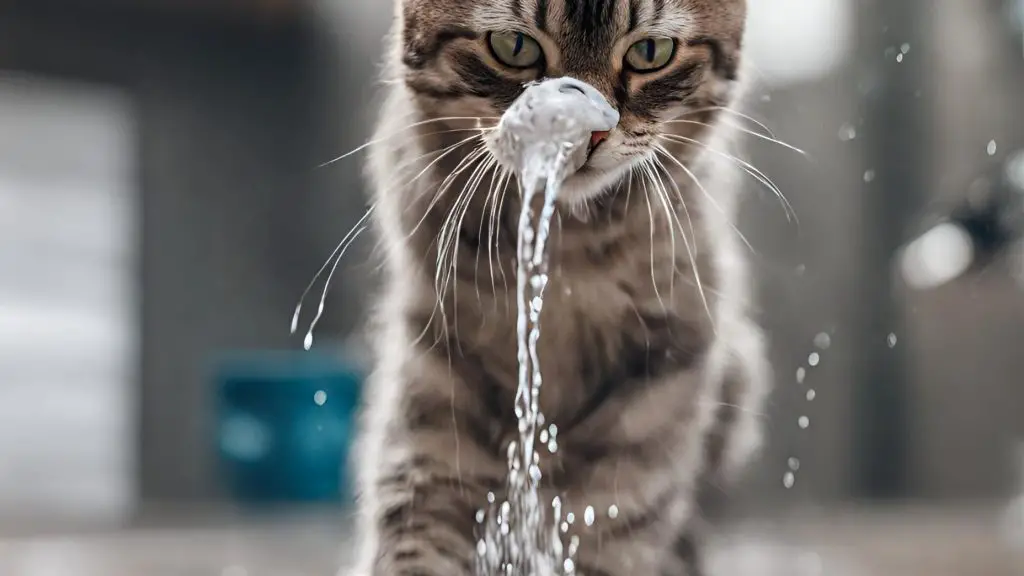
When it comes to training cats, using water sprays can be a contentious issue. Understanding that positive reinforcement tends to yield better results, we want to highlight a range of alternatives to water spray for discipline. Below, we’ll explore options that can help correct unwanted behavior in cats, focusing on techniques that build trust rather than fear.
Positive Reinforcement: This method involves rewarding desired behaviors, thereby increasing the likelihood that these behaviors will be repeated. Treats, affection, and verbal praise create a positive association and motivate your feline to behave appropriately.
- Clicker training to mark good behavior
- Providing treats for using scratching posts instead of furniture
- Giving attention when a cat greets people calmly
Environmental Enrichment: Cats need a stimulating environment that satisfies their natural instincts to explore, hunt, and play. Providing an enriched environment can reduce the occurrence of unwanted behaviors naturally, without the need for disciplinary measures such as water sprays.
- Interactive toys to keep them mentally stimulated
- High perches and cat trees for climbing and surveying
- Scratching posts of various materials and orientations
Ignoring Undesirable Behaviors: Sometimes, the best response is no response. Cats can interpret attention as a reward, so by not reacting to unwanted behaviors, you avoid reinforcing them inadvertently.
Consistency and Patience: Cats learn best from consistent and patient guidance. Ensure all family members understand and adhere to the training methods chosen to avoid any confusion for your pet.
| Method | Benefits | Suggestions |
|---|---|---|
| Positive Reinforcement | Strengthens bond, encourages repetition of good behavior | Clicker training, treats, affection |
| Environmental Enrichment | Redirects energy, satisfies natural instincts | Puzzle feeders, cat trees, toys |
| Ignoring Behaviors | Does not reinforce bad behaviors with attention | Walk away or avoid eye contact when the cat misbehaves |
| Consistency and Patience | Prevents confusion, builds trust | Align family members on training habits and rules |
Remember, the key to training cats without the need for water sprays is to create an environment of trust and understanding. It can lead to a fulfilling and harmonious relationship between you and your furry friend.
Expert Opinions on Water Spray Training for Cats
The debate around the use of water spray for cat behavior training has been contentious, with a range of opinions emerging from professionals in veterinary and animal behavior fields. These experts provide insights based on years of research and hands-on experience with feline psychology and training methodologies.
What Veterinarians Have to Say
Veterinarians often encounter questions from pet owners about cat behavior training with water spray. A common conclusion amongst these professionals is that while it might provide a temporary solution, the long-term effects on a cat’s well-being are debatable. Many vets caution against the potential for increased stress and anxiety which can lead to other unwanted behaviors. Additionally, the effectiveness of water spray as a training tool can be inconsistent, as not all cats respond to it in the same manner.
Insights from Animal Behaviorists
Animal behaviorists have a focused lens on the psychological aspects of training methods, including the use of water sprays. They argue that understanding a cat’s behavior is key to addressing any issues. Expert opinions on water spray training tend to highlight the importance of consistency, timing, and the potential for miscommunication between the cat and owner. Rather than recommending water spray, behaviorists often advise more effective, positive reinforcement techniques that are aligned with a cat’s natural behavior.
| Expert | Opinion on Water Spray Training | Recommended Training Method |
|---|---|---|
| Veterinarians | May cause stress and inconsistent results | Environmental enrichment |
| Animal Behaviorists | Can lead to miscommunication and increase anxiety | Positive reinforcement techniques |
The Psychology Behind Cat Discipline Spray
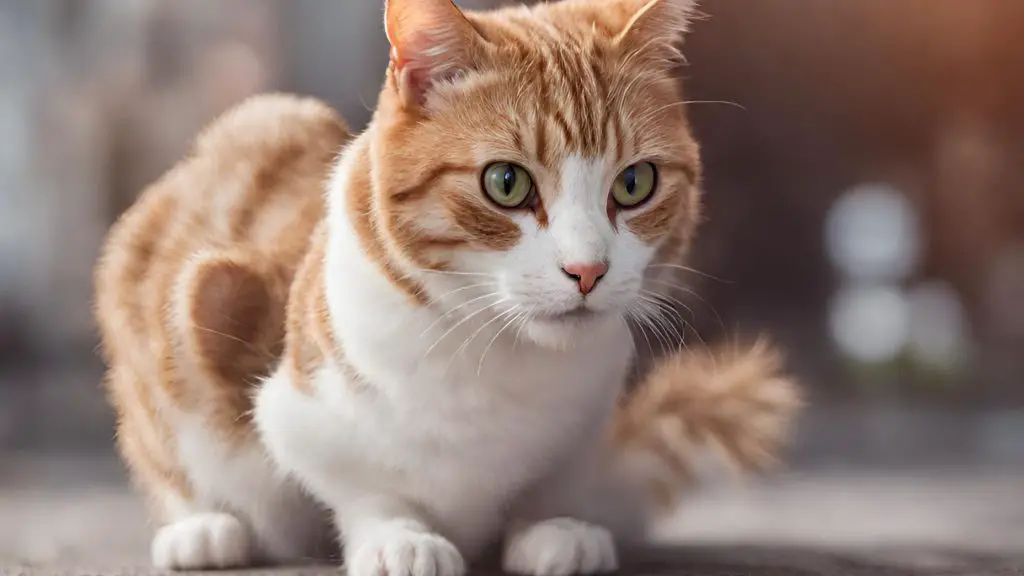
The exploration into the psychology behind cat discipline spray is not merely an exercise in curiosity but a pivotal step in understanding the intricate dynamics of feline behavior. When we consider the application of cat behavior training with a water spray, it’s essential to scrutinize how cats process these aversive stimuli and ultimately, how this influences their behavior.
Cats, like all animals, learn through a variety of experiences and reactions to their environment. The introduction of a deterrent like a water spray signals an unpleasant consequence for a specific behavior, which, if applied consistently, could potentially lead to an association that discourages the behavior over time. However, this learning process is heavily influenced by the cat’s individual personality, past experiences, and the context in which the spray is used.
- Immediate Consequence: The immediate nature of a water spray as a deterrent is crucial in creating an instantaneous association between the unwanted behavior and the unpleasant spray.
- Consistency: For the disciplinary measure to be effective, it must be consistently applied so the cat understands the specific behavior to avoid.
- Timing: Cats link cause and effect within a very short window of time. Delayed reactions can lead to confusion and stress, rather than learning.
The psychological impact of using disciplinary sprays does not exclusively reside in the realm of aversion. Indeed, the nuances of cat psychology suggest that a balance may be more effective for both the cat’s well-being and the owner’s objectives in behavior modification.
| Aspect | Aversive Stimuli (Water Spray) | Positive Reinforcement |
|---|---|---|
| Learning Type | Avoidance learning | Reward-based learning |
| Behavioral Outcome | Short-term behavior suppression | Long-term behavior adoption |
| Emotional Response | Stress/anxiety | Security/contentment |
| Relationship Impact | Potential erosion of trust | Strengthening of bond |
Given these insights, it becomes apparent that while a cat discipline spray can be an effective deterrent for immediate behavior correction, its efficacy might be limited without consideration of the cat’s holistic learning experience. Incorporating positive reinforcement, such as treats and praise, alongside or instead of cat behavior training with water spray, favors a learning environment that is much more conducive to developing trust and a positive relationship between cats and their owners.
Effective Behavior Modification with Water Spray
In addressing the challenge of teaching our feline companions right from wrong, it’s crucial to identify which behaviors can be effectively modified with the application of a water spray. Selecting the appropriate moment and method for using water spray on a cat is paramount to ensure training success, while simultaneously respecting the cat’s well-being and tolerances.
Identifying Behaviors that Can be Corrected with Water Spray
Not all cat behaviors are amenable to correction through a water spray. Effective behavior modification with water spray is most successful in the case of behaviors that are inappropriate but not stemming from fear or stress. Such behaviors may include:
- Jumping onto forbidden surfaces such as kitchen counters or dining tables
- Scratching furniture instead of a designated scratching post
- Aggressive behavior during playtime that needs to be toned down
It’s important to note that behaviors driven by anxiety, such as territorial spraying or extreme shyness, are not suitable for water spray correction and require different behavioral interventions.
Guidelines for Successful Water Spray Training
When it comes to using water spray on cat, there are several guidelines that should be followed to maximize effectiveness and minimize stress:
- Timing is essential: The spray must be used at the moment of the unwanted behavior to create an immediate association.
- Consistency is key: Always respond to the unwanted behavior with the same promptness and level of response.
- Emphasize positive reinforcement: Balance the use of water spray with rewards for good behavior to encourage a change in behavior.
- Moderation: Use the water spray sparingly and only for specific behaviors you want to correct. Overuse can lead to fear and stress.
- Never spray in the face: Aim for the body and avoid the cat’s face to prevent any harm and undue distress.
These guidelines should serve as a framework for owners endeavoring to implement effective behavior modification strategies while maintaining a compassionate and responsible approach to feline training.
Spray Cat with Water: Ethical Considerations
The question “Is it OK to spray a cat with water?” is not just about effectiveness, but also about the ethical considerations that come with choosing such a disciplinary method. It obliges pet owners to deeply consider the physical and psychological safety of their feline companions.
When pondering over whether to use water spray as a behavior correction tool, it is essential to weigh this decision against valuable ethical standards. In doing so, we acknowledge our responsibility as pet owners to foster not only obedient behavior but also to ensure a loving and stress-free environment for our cats.
- Stress and Anxiety: Spraying a cat with water can potentially lead to increased stress and anxiety, which opposes the nurturing environment we aim to provide.
- Trust: Trust between pet and owner is paramount; using water spray may jeopardize this bond beyond the immediate aim of deterrence.
- Long-term Behavior: Aversive training methods might offer a quick fix, but they do not necessarily promote understanding or long-term behavioral change.
A measured approach to disciplinary action is always encouraged, one that respects the welfare and natural behavior of cats as sentient beings. It begs the question of alternative and more ethical ways to modify a cat’s behavior without resorting to negative reinforcement.
| Ethical Aspect | Consideration | Implications for Cat |
|---|---|---|
| Responsibility of Care | Maintaining physical and emotional well-being of cats | Ensures a safe and fulfilling living environment |
| Morality of Training Methods | Evaluating the fairness and necessity of water spraying | Minimizes potential trauma and fosters better learning |
| Quality of Relationship | Building trust through positive reinforcement | Promotes stronger bonds and mutual respect between cat and owner |
In conclusion, while the effectiveness of using water sprays is still a subject of debate, the ethical considerations it raises are clear. Pet owners must critically examine their actions and the lasting impact they may have on their feline companions. It is pivotal to explore compassionate alternatives that align with both the nature and the needs of cats, ensuring their protection and happiness remain paramount.
Training Cats with Water Sprays: Do’s and Don’ts
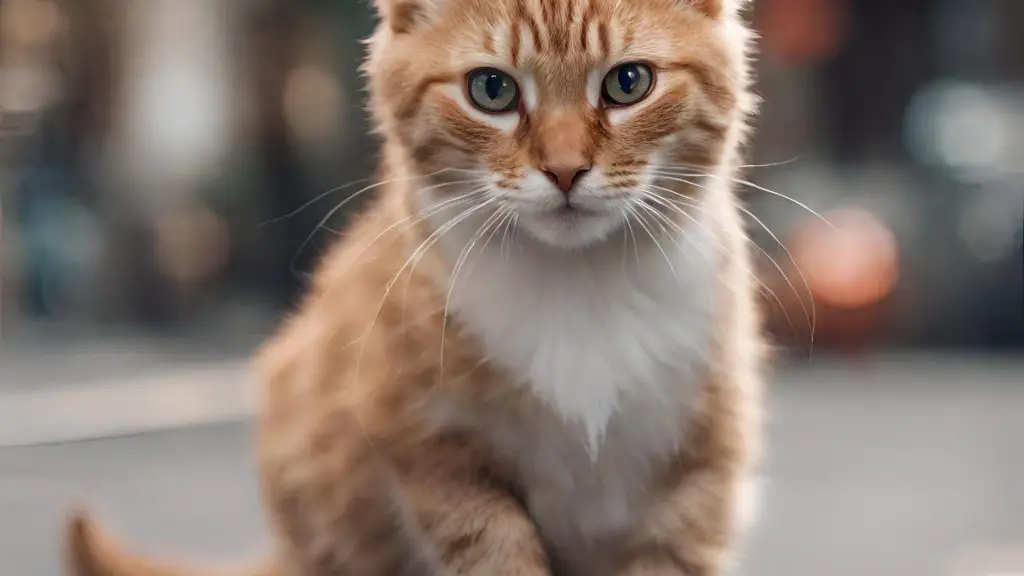
The prospect of training cats with water sprays to curb undesirable behaviors poses a quandary for many pet owners. While some argue it’s a straightforward solution for stopping bad cat behavior with water, it is crucial to approach this technique with understanding and care. Below, we’ll discuss the proper way to integrate water sprays into your training regimen and highlight the pitfalls that should be avoided.
The Right Way to Introduce Water Spray
Introducing a water spray to your cat requires patience and proper timing to achieve positive results. Consider these guidelines for a well-adjusted approach:
- Begin by associating the spray with a distinct sound or command to prevent confusion.
- Use the water spray only during the act of misbehavior, never after, to ensure immediate association.
- Always opt for a gentle mist instead of a strong jet of water to avoid fear and stress.
- Complement the water spray discipline with rewards for good behavior to focus on positive reinforcement.
Mistakes to Avoid in Water Spray Discipline
To preserve the trust and safety of your feline companion, steer clear of these common missteps:
- Do not use the spray as a form of punishment; the goal is behavior modification, not retribution.
- Avoid spraying your cat in the face as this can cause anxiety and damage your relationship.
- Never use the water spray in conjunction with shouting or physical intimidation.
- Refrain from relying solely on the water spray; integrate other training techniques into your routine.
| Method | Behavior Target | Recommended Use |
|---|---|---|
| Water Spray | Scratching Furniture | During the act, followed by a redirection to a scratching post |
| Water Spray | Counter Surfing | Sparingly, accompanied by providing an alternative high location to perch |
| Water Spray | Aggression Towards Other Pets | Only under supervision and combined with socialization practices |
While water sprays can be a part of your toolkit for curbing certain habits, they must be used judiciously. Being mindful of these do’s and don’ts contributes to a more harmonious home for both you and your cat, fostering a relationship built on trust rather than fear.
Stopping Bad Cat Behavior with Water: Real-Life Stories
The journey of mitigating feline misconduct through water deterrents is filled with varied outcomes. Numerous real-life success stories accentuate the utility of water in stopping bad cat behavior with water, yet each account carries an undertone of personal adaptation to the unique dynamics between cat and owner. Here are summarized tales where water intervention made a difference.
Cleo used to find solace in clawing our living room couch until we implemented periodic water sprays whenever she approached it. Gradually, she associated the couch with the possibility of an unwelcome squirt and her habits shifted towards the scratching post we provided. – Anita, Maine Coon Owner
It’s not just stories of solo adventurers; some families found that this approach fostered a more harmonious household.
After weeks of nightly disturbances, our Tabby, Zeus, has finally stopped knocking items off the kitchen counter, thanks to a carefully timed water spray routine. Our family can now enjoy a full night’s sleep. – The Harrison Family, Tabby Enthusiasts
While these narratives hint at success, the approach is not without its challenges. Some owners report initial confusion and persistence of unwanted behavior.
| Owner’s Name | Cat’s Name | Problem Behavior | Method Utilized | Result |
|---|---|---|---|---|
| Eleanor | Pixie | Aggressive play | Water spraying during act | Mild improvement, seeking further advice |
| Jim and Rosa | Garfield | Excessive yowling | Water spray combined with verbal cues | Behavior ceased within a month |
| Sophia | Luna | Counter surfing | Water spray as deterrent | Successful deterrence, behavior redirected |
Though these real-life success stories suggest a spectrum of efficacy, they underline the importance of consistency, patience, and the need to tailor disciplinary measures to each individual cat. Embracing the personal touch seems key in stopping bad cat behavior with water effectively.
How to Stop Cat Behaviors Without Harm
When it comes to correcting unwelcome cat behaviors, positive reinforcement techniques stand out as the most humane and effective strategies. Unlike punitive approaches such as spraying with water—which can lead to stress and a damaged relationship between cats and their owners—positive reinforcement encourages good behavior without physical or psychological harm. Focusing on rewards rather than punishment aligns with a cat’s natural inclinations and enhances their learning experience.
Positive Reinforcement Techniques
Positive reinforcement is the process of rewarding your cat for displaying favorable behaviors, thereby increasing the likelihood that these behaviors will recur. The reward can take various forms, including tasty treats, affection, or playtime, all of which can motivate your cat to repeat the desired actions. This method reinforces the bond between you and your feline friend, as it is built on mutual respect and understanding.
- Reward behaviors immediately to reinforce the connection between action and prize.
- Vary the types of rewards to maintain your cat’s interest and enthusiasm.
- Use clicker training to mark the behavior you wish to encourage, followed by a reward.
- Incorporate training sessions into your daily routine to keep the lessons consistent and clear.
Creating a Stimulating Environment for Your Cat
A stimulating environment is another key component in how to stop cat behaviors without harm. By providing an enriched habitat that caters to your cat’s instinctual needs, you discourage negative behaviors that often stem from boredom or frustration. Creating such an environment can be both fun and rewarding for you and your pet.
| Environmental Enrichment | Benefits |
|---|---|
| Cat Trees and Scratching Posts | Encourages natural climbing and scratching behavior, saving your furniture. |
| Interactive Toys | Keeps your cat mentally stimulated and physically active. |
| Window Perches | Offers a view of the outdoors which can be very entertaining for indoor cats. |
| Puzzle Feeders | Makes meal times challenging and fun, promoting intellectual engagement. |
Remember, every cat is unique and may respond differently to various forms of enrichment. Observing your cat’s responses and adjusting the environment accordingly will lead to a harmonious household where your cat’s behavior aligns with your expectations, without any harm done.
Conclusion
In the discourse surrounding effective feline discipline, the method of using water spray on cats has aroused considerable debate. Through an exploration of cat behavior and distinct training methodologies, this article has sought to provide comprehensive insights into the consequences and efficacy of such a method. It is paramount to acknowledge that understanding the psychological underpinnings of our feline companions is critical when shaping their behavior. With the well-being of our pets as the central pillar of our approach, we must weigh both the immediate and long-term effects of employing cat behavior training with water spray.
Evaluating the alternatives to water spraying has revealed an array of behavior modification strategies that align more closely with positive reinforcement and the innate needs of cats. By leaning towards methods that foster trust and mutual respect, cat owners can achieve the desired outcomes without the potential drawbacks that water deterrents carry. The input from veterinarians and animal behaviorists further underscores the importance of training methods that support the psychological health of cats, steering away from techniques that may induce stress or anxiety.
As responsible pet owners, it is our privilege and duty to nurture the bond we share with our cats through kindness and empathy. By concluding this discussion, the emphasis remains on encouraging humane, informed approaches to behavior training. Although water sprays might seem like a quick fix, the complexity of this issue and its impact on animal welfare calls for more thoughtful, affectionate, and effective strategies. Thus, the ultimate message rings clear: prioritize love and patience in guiding the conduct of your cherished feline friend.
FAQ
Q: Is it OK to spray a cat with water?
A: Spraying a cat with water can be a controversial topic. While it may deter unwanted behavior temporarily, it can also cause stress and anxiety for the cat. It is important to consider a cat’s emotional welfare and whether other, more positive training methods might be effective.
Q: How can I understand and stop my cat’s bad behaviors effectively?
A: Effective cat behavior training involves understanding why a cat behaves a certain way and responding in a manner that aligns with their natural instincts and needs. Positive reinforcement and creating a stimulating environment are often more beneficial to cats than punitive measures like spraying with water.
Q: Are water sprays an effective deterrent for cats?
A: While some may find water sprays to be a quick deterrent for certain behaviors, the effectiveness is variable and might not address the root cause of the behavior. It’s also crucial to balance the use of deterrents with positive reinforcement to maintain a trusting relationship with your cat.
Q: What are some alternatives to using a water spray for cat discipline?
A: Alternatives to using water spray for cat discipline include environmental enrichment, providing appropriate scratching surfaces, clicker training, pheromone diffusers, and consistent positive reinforcement for good behavior.
Q: What do experts say about using water spray training for cats?
A: Veterinarians and animal behaviorists typically recommend training methods based on positive reinforcement rather than aversive stimuli like water sprays. They stress the importance of understanding feline psychology and fostering a compassionate training environment.
Q: Can you explain the psychology behind using cat discipline sprays?
A: Cat discipline sprays, such as water sprays, are based on the principle of punishment by introducing an unpleasant stimulus to reduce the occurrence of a behavior. However, cats often respond better to positive reinforcement, as punishment can lead to stress and anxiety.
Q: Are there specific behaviors that can be corrected with water spray?
A: Some owners might find temporary success in using water spray for behaviors like jumping on counters or scratching furniture. However, it is not a long-term solution, and it does not teach the cat alternative, acceptable behaviors.
Q: How can I effectively modify my cat’s behavior with a water spray?
A: If you choose to use water spray, it should be applied sparingly and immediately after the undesired behavior to be clear to the cat which action is being corrected. Always follow up with positive reinforcement strategies for preferable behavior.
Q: What ethical considerations should I keep in mind when using a spray cat with water?
A: When considering spraying your cat with water, ethical considerations include the potential distress it may cause, the effectiveness of the training, and whether positive alternatives could yield better results without causing the cat any suffering.
Q: Can you provide some do’s and don’ts for training cats with water sprays?
A: Do use water spray as a last resort, apply it consistently and immediately after the misbehavior, and pair it with positive reinforcement. Don’t use it aggressively, as a substitute for addressing the underlying issues, or without considering the cat’s stress level.
Q: Are there any real-life success stories about stopping bad cat behavior with water?
A: There are mixed results from pet owners. Some report success in deterring specific behaviors in the short term, while others find that it damages their relationship with their cat or does not produce a long-lasting change in behavior.
Q: What are some positive reinforcement techniques to stop cat behaviors without harm?
A: Some positive reinforcement techniques include using treats, petting, praise, or playtime as rewards for good behavior, using a clicker to mark the exact moment of the desired behavior, and ignoring unwanted behavior instead of punishing the cat.
Q: How can I create a stimulating environment for my cat to prevent undesired behaviors?
A: Provide your cat with a variety of toys, regular playtime, scratching posts, safe outdoor access if possible, and places to climb and hide. A stimulating environment can prevent boredom and reduce the occurrence of undesired behaviors.

